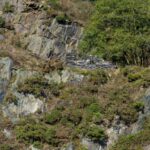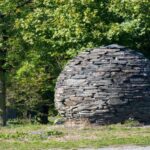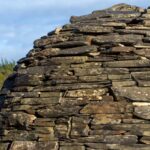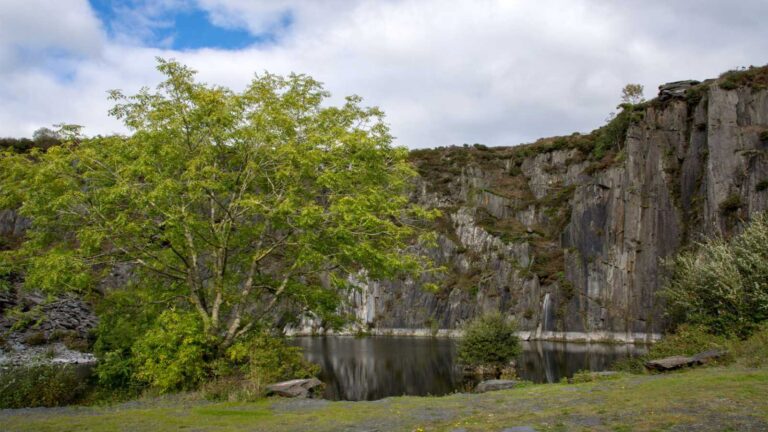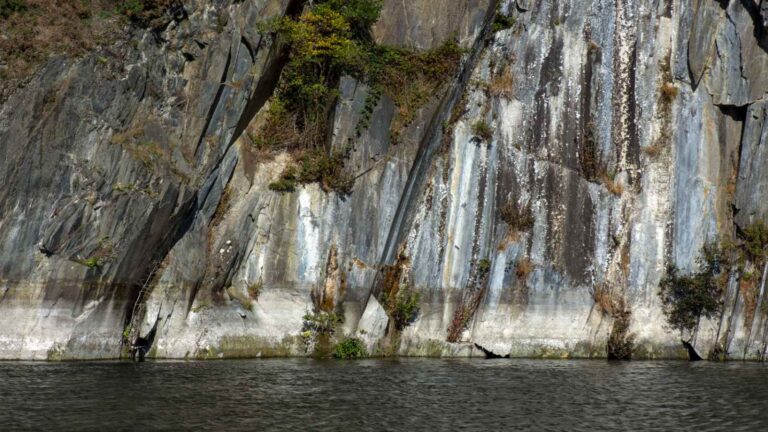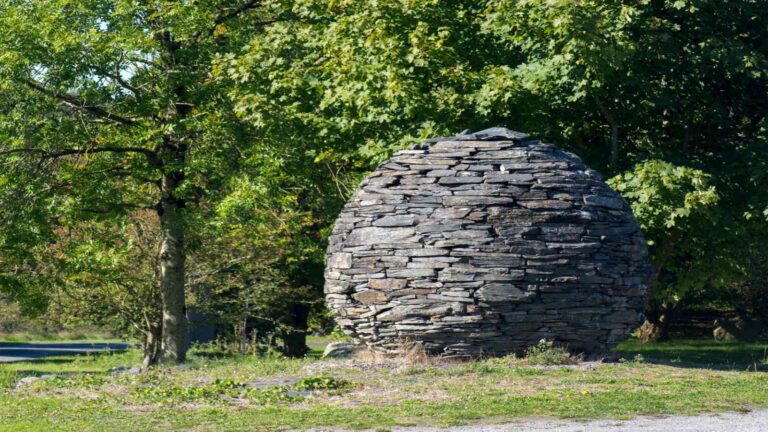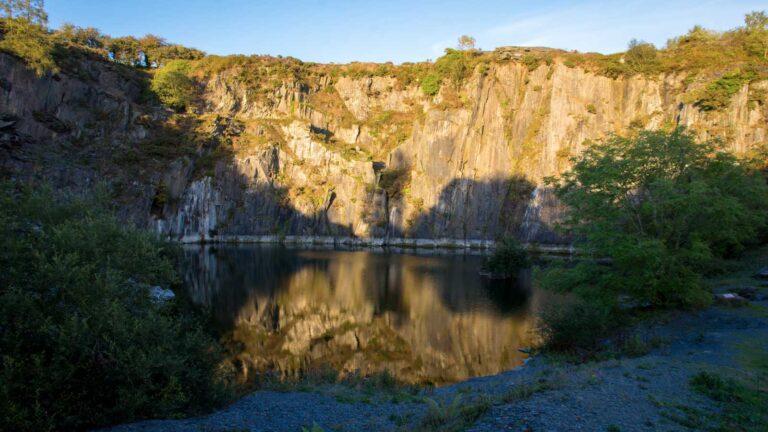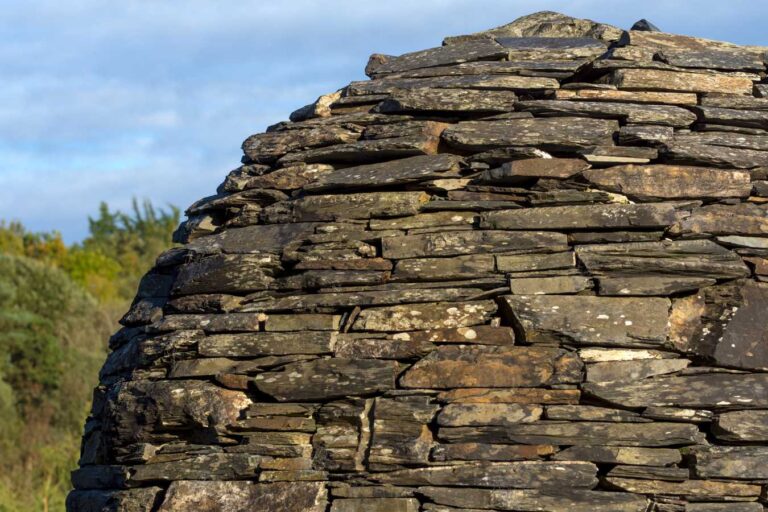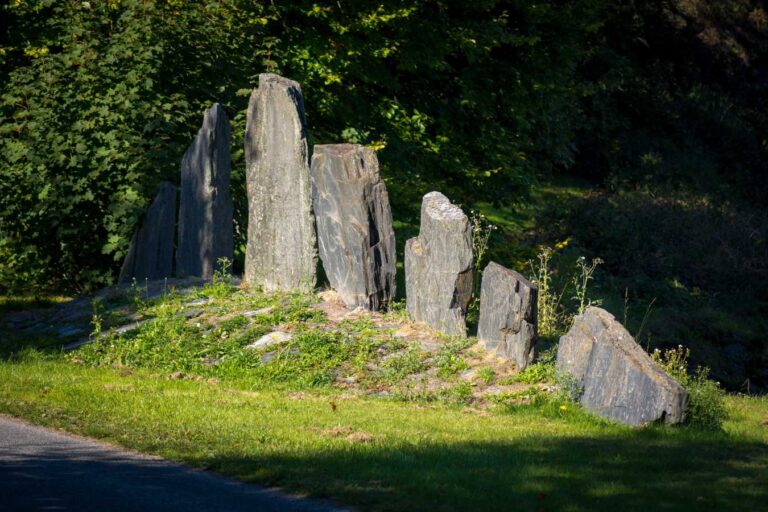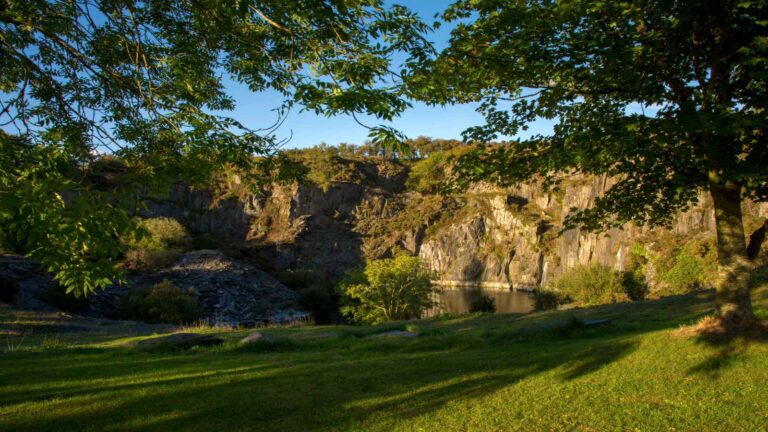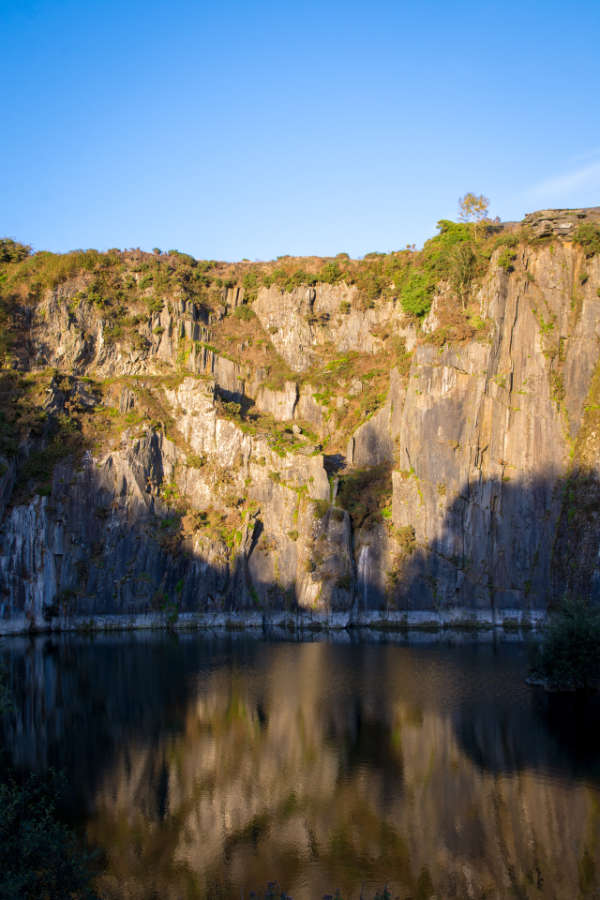Initially slate rock was excavated by each owner of suitable ground in the area on an individual basis. When a load of slates was secured in this basic manner the owner took them to the nearest town and sold them to the highest bidder.
The Victorian Slate Quarry Ltd took over the townlands of Ahenny and Clashmanudh in 1863 and quarrying became a large scale operation including an export trade with England. The slate produced had the reputation of being the finest in Europe.
A manager’s residence was built, two mill houses and two bridges were constructed over the Lingaun river, roads were built and a canal of over two miles to turn the huge water wheels in both mills. There were two distinct quarries one at each mill. The number one quarry ceased working in 1911. This quarry was worked down to a depth of 300 ft – 200 ft below the level of the river. This caused much trouble with flooding. In order to deal with this a huge turbine was installed towards the pumps which improved matters but did not completely solve the problem. It was at times incapable of dealing with the inrush of water. The quarry employed about 90 men, quarrymen, scallopers. slate makers, carpenters, smiths and carters. From its establishment in 1863 until it closed in 1911 it never changed ownership.
Another quarry was in operation on the other side of the Lingaun river in co. Kilkenny, known locally as the Ormond quarry. This changed ownership many times and was idle for some years until the Carrick on Suir Slate Quarry Co Ltd. took it over in 1927. This was an offshoot of the well known Killaloe Co. which needed extra capacity, and over the years it supplied slates for the ESB transformer stations and the ESB power house at Ardnacrasha, also the Four Courts in Dublin which was destroyed in the civil war. It also supplied slates for the General Post Office in Dublin which was gutted in 1916.
The Carrick Slate Quarry was busy up to 1934, In 1932 there was a serious accident when dynamite was being rammed in to place with a steel bar, instead of a wooden stave, killing one man and injuring another who died a few days later. The Carrick Slate Quarry closed in 1935 subsequently James Power of Knockroe bought the quarry from the Earl of Ossory, for 5 years he tried to make a viable business of the quarry but in vain.
The last shipment of slates left the quarry for Achill island in 1947 to roof a school. Thus ended an industry which received recognition in July 1890 at the International Exhibition of Mining and Metallurgy at the Crystal Palace in London.



